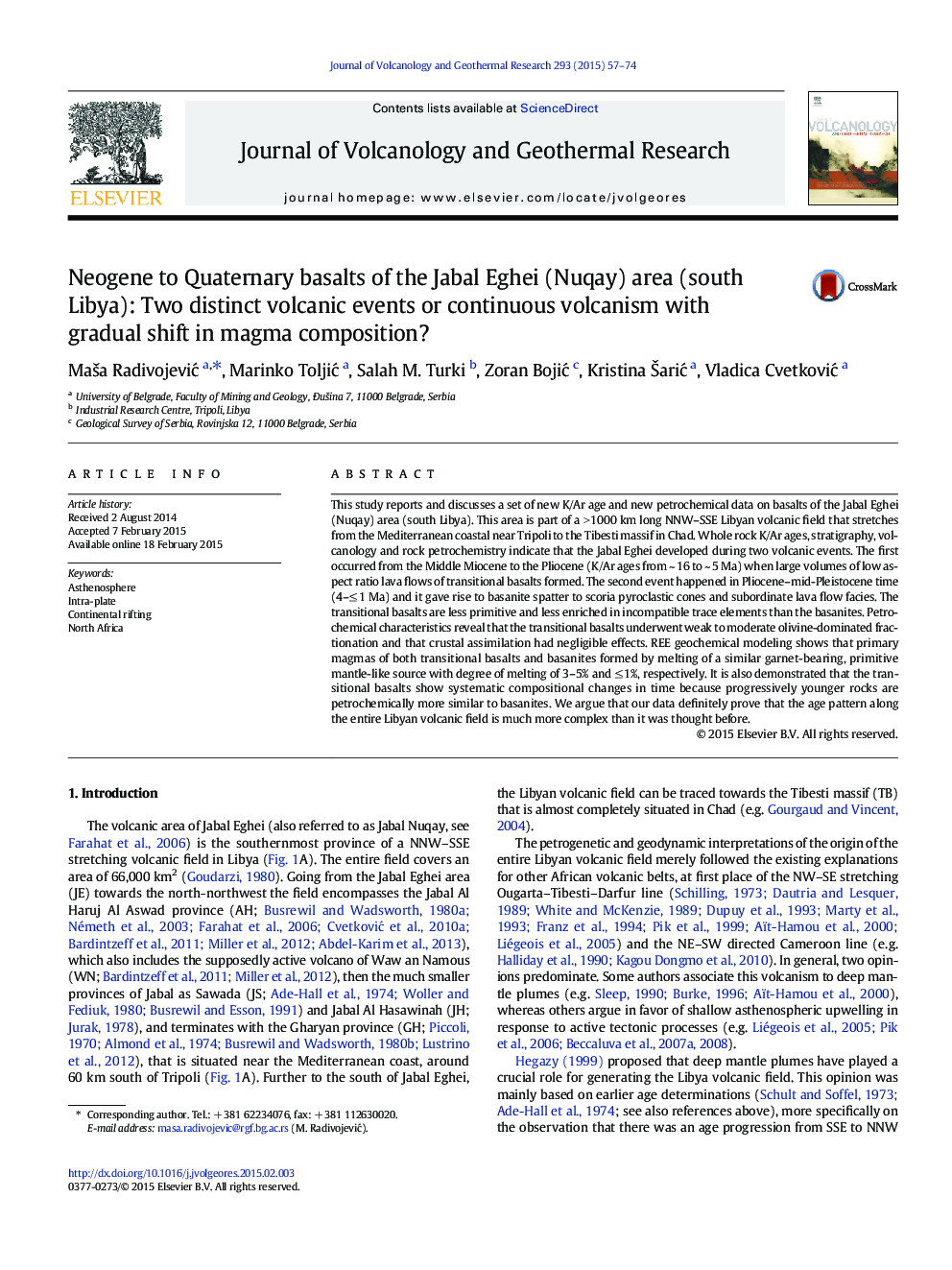| کد مقاله | کد نشریه | سال انتشار | مقاله انگلیسی | نسخه تمام متن |
|---|---|---|---|---|
| 4714598 | 1638329 | 2015 | 18 صفحه PDF | دانلود رایگان |
• Middle Miocene to mid-Pleistocene volcanic events in Jabal Eghei area, south Libya
• Transitional to alkaline volcanism with different eruption styles and source nature
• Basanites origin at lower degrees of melting of more enriched mantle source
• Increasing of K-bearing phases in the melting residuum from older to younger rocks
This study reports and discusses a set of new K/Ar age and new petrochemical data on basalts of the Jabal Eghei (Nuqay) area (south Libya). This area is part of a > 1000 km long NNW–SSE Libyan volcanic field that stretches from the Mediterranean coastal near Tripoli to the Tibesti massif in Chad. Whole rock K/Ar ages, stratigraphy, volcanology and rock petrochemistry indicate that the Jabal Eghei developed during two volcanic events. The first occurred from the Middle Miocene to the Pliocene (K/Ar ages from ~ 16 to ~ 5 Ma) when large volumes of low aspect ratio lava flows of transitional basalts formed. The second event happened in Pliocene–mid-Pleistocene time (4–≤ 1 Ma) and it gave rise to basanite spatter to scoria pyroclastic cones and subordinate lava flow facies. The transitional basalts are less primitive and less enriched in incompatible trace elements than the basanites. Petrochemical characteristics reveal that the transitional basalts underwent weak to moderate olivine-dominated fractionation and that crustal assimilation had negligible effects. REE geochemical modeling shows that primary magmas of both transitional basalts and basanites formed by melting of a similar garnet-bearing, primitive mantle-like source with degree of melting of 3–5% and ≤ 1%, respectively. It is also demonstrated that the transitional basalts show systematic compositional changes in time because progressively younger rocks are petrochemically more similar to basanites. We argue that our data definitely prove that the age pattern along the entire Libyan volcanic field is much more complex than it was thought before.
Journal: Journal of Volcanology and Geothermal Research - Volume 293, 15 February 2015, Pages 57–74
